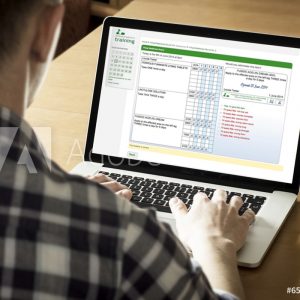15 Jul Medicines storage in a heatwave
With the increasing temperatures the UK now faces in the summer, do you need to take any action with your medicine storage?
If you find this article useful, sign up for updates when new articles are published (on the left hand side or bottom of the screen for mobiles).
IN DETAIL
Some care homes keep a daily log of room temperatures where medicines are stored. They might have been told to do this by their supplying pharmacy or a care inspector.
This might not seem like much work when medicines are stored centrally in one room, as you can just check and record the room temperature when you check the fridge temperature (we definitely advise you record the daily minimum and maximum temperature in the fridge).
However, increasingly care settings are storing each person’s medicines in their bedrooms. So with a 90-bed care home, that would mean checking and recording 90 thermometers each day. Is this really necessary?
EXPIRY DATES, AND STORAGE CONDITIONS
Most medicines come with directions from the manufacturer to store below 25C. Some state store below 30C. When you look at temperature logs in those care homes that have been recording room temperatures, they are mostly below 25C, but they may spend the odd day at 26, 27 or maybe 28C during the summer months. Is this a problem? Let’s look at some background here.
Medicines slowly start to break down and degrade after they are manufactured. For most medicines it takes years for them to break down and become less active. When they reach a certain percentage of their initial activity (say, 90%) that’s when the expiry date is set.
So (for example) if aspirin is manufactured in Jan 2010, and 5 years and 3 months later, it degrades to 90% activity, then the expiry date is set at April 2015. If you were to take this aspirin in December 2015, it might only be 89% active. By the way, these aren’t exact figures, they are just used to illustrate the principle. The key point here is that the aspirin doesn’t go from 100% active to 0% active at midnight on the expiry date!
The rate of breakdown of the medicine is usually affected by heat and humidity. Basically, the hotter and wetter it is, the quicker the medicine breaks down. Going back to the aspirin example, if aspirin was stored at say, 32C for 5 years and 3 months it might be only 75% active at its expiry date. Again, these aren’t actual figures, they just illustrate the point.
What’s important is the length of time that the medicine is stored at these higher temperatures. Spending just a few days of the year at these higher temperatures is unlikely to affect the medicine in any clinically significant way.
PHARMACIES DON’T ROUTINELY RECORD ROOM TEMPERATURES
Pharmacies do not record daily room temperatures, and the medicines can sit on a pharmacy shelf for years. This point has been recently checked with the pharmaceutical inspectors from the General Pharmaceutical Council. The only settings that require a daily log of room temperature are pharmaceutical wholesalers.
So if pharmacies don’t do this, why do care homes record room temperatures for medicines that are usually just stored for a month (or a few months for when required medicines or homely remedies)? It makes no sense.
WHAT DO NICE GUIDELINES AND CQC SAY?
NICE guidelines don’t really help. On pages 23-24 of the full 223-page care guidelines [1], we have:
Recommendation 1.12.2:
“Care home providers should include the following information in their process for storing medicines safely:”
3rd bullet point:
“- the temperatures for storing medicines and how the storage conditions should be monitored”
Then later on page 130, we have:
“storage temperatures and monitoring (fridge 2–8°C, room usually no more than 25°C)”
Note the use of the word “usually”.
CQC have not issued any advice on this and they should follow NICE guidelines.
SO WHAT IS OUR ADVICE?
Our advice is to follow the same rules as pharmacies. Keep the temperature records to show inspectors that when ambient temps are considered unusually warm, the problem has been checked, monitored and (if needs be) addressed. You are then satisfying NICE guidelines.
Then, stop taking the room temperatures and focus on caring for your clients.
If you want more information or want to discuss how this might affect you, call us (01273 917210), email us or click here to find out about our open workshops running this month.
If you find this article useful, sign up for updates when new articles are published (on the left hand side or bottom of the screen for mobiles).
REFERENCES:
[1] Managing medicines in care homes. Published 14 March 2014. http://www.nice.org.uk/guidance/sc/SC1.jsp.



